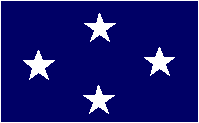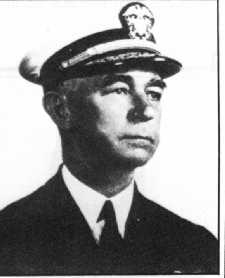

| Admiral
Richmond Kelly Turner
Born: 27 May 1885, Portland, Oregon Died: 13 February 1961, Monterey, California Nickname: "Terrible" |
 |
He and Marine Major-General Holland M. Smith formed a respectable team during the following operations at Betio, Makin, Majuro, Kwajalein, Roi and Namur. Following these succesful though sometimes bloody operations, Turner was made Vice-Admiral. In this rank, he led the attacks on Saipan, Tinian and Guam, attacks on which his own force moved flawlessly.
As Leyte was MacArthur's operation, Turner played no part in it, but he used the time to plan for operations against Iwo Jima and Okinawa, though finding time for being promoted to Admiral. At Iwo, his good judgement left him for a time, and his unwillingness to bombard the beaches throughly eventually led to a bloody campaign with major US losses. Operations against Okinawa proved equally difficult, but Turner's units beached the US ground troops without problems and Turner initiated destroyer picket operations to help repel Kamikazes.
On May 17th 1945, Admiral Nimitz relieved Turner with Rear-Admiral Harry Hill, ordering him to plan for the projected landing on Kyushu, Japan, when the atomic bombs brought an end to the struggle. After the war, Turner was with the United Nations and finally retired in 1952. His alcoholism and the death of his wife left him little strength, and Turner died of a coronary occlusion in 1961, six weeks after his wife.